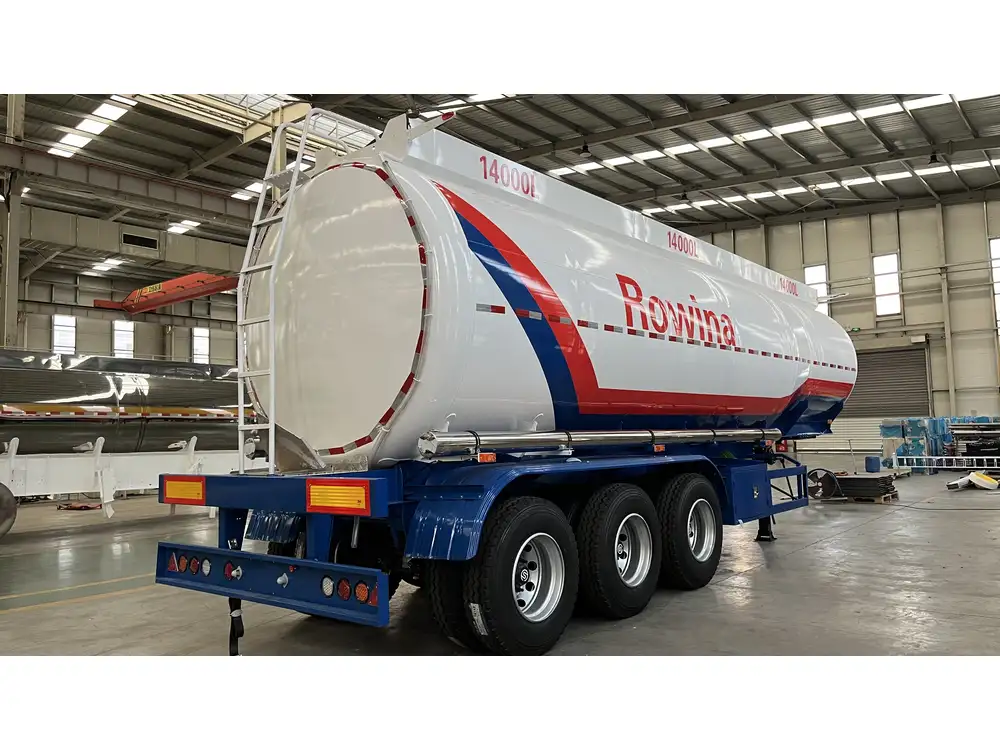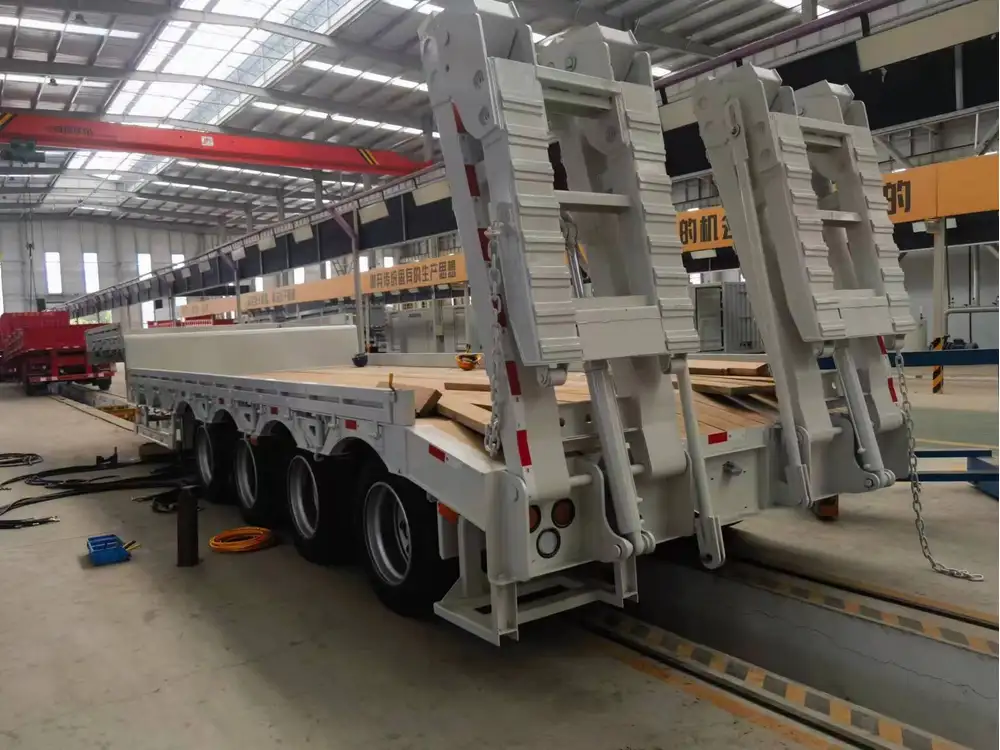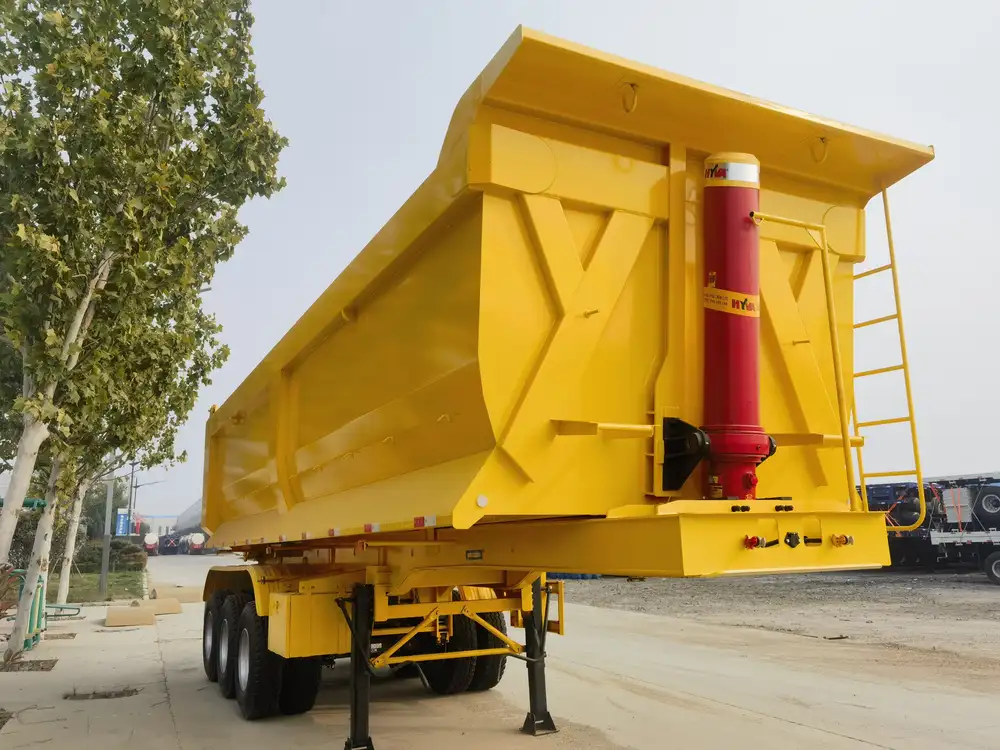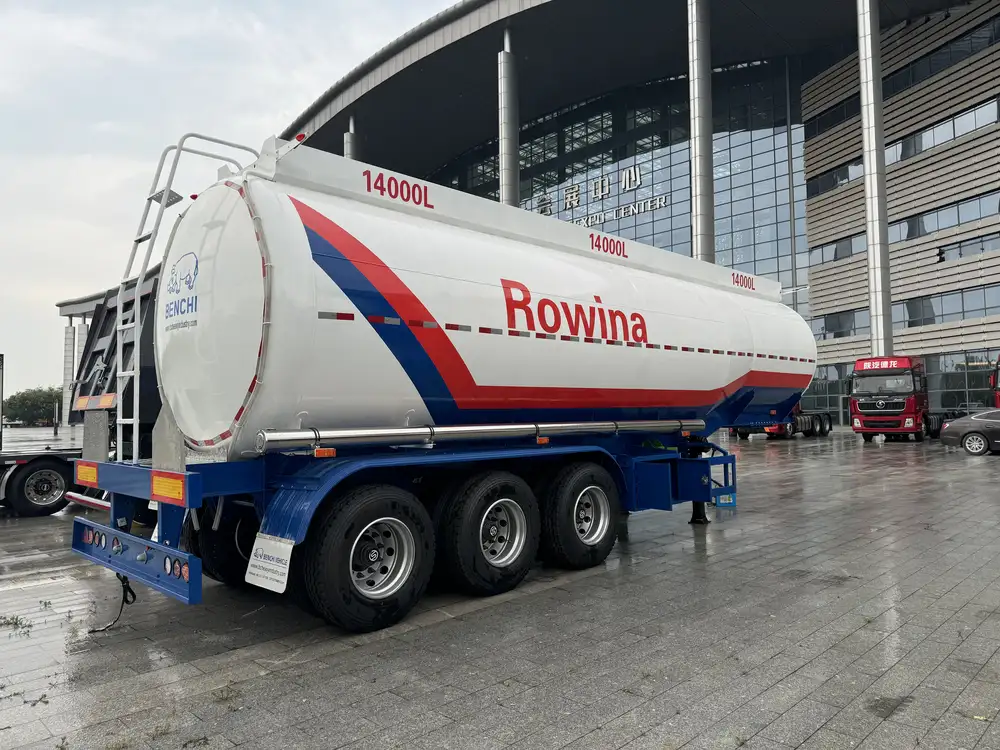Side dump trailers have gained significant traction in the hauling and construction industries due to their unique dumping capability, which allows for efficient and flexible unloading. However, the question that often arises is: What is the maximum weight for a side dump trailer? This inquiry extends beyond mere numbers; it encompasses various factors including materials, regulations, and safety considerations.
Key Factors Affecting Maximum Weight
1. Design Specifications
The design of a side dump trailer plays a critical role in determining its maximum weight capacity. Common designs include:
| Type of Side Dump Trailer | Typical Weight Capacity | Construction Materials |
|---|---|---|
| Single Axle | 12,000 to 15,000 lbs | Steel, Aluminum |
| Tandem Axle | 25,000 to 30,000 lbs | Steel, Aluminum |
| Triaxle | 34,000 to 40,000 lbs | Steel, Aluminum |
These numbers represent just averages and can vary broadly based on manufacturer specifications, adding an essential layer of complexity.

2. Materials Being Hauled
Different materials possess diverse weight properties, and understanding these can aid operators in determining if they are approaching the weight capacity of their trailer. For instance:
- Gravel: Approximately 2,600 lbs per cubic yard
- Sand: Approximately 2,700 lbs per cubic yard
- Topsoil: Approximately 1,000 lbs per cubic yard
3. Regulations and Compliance
Weight limits for trailers are strictly regulated by local, state, and federal laws. In the U.S., Federal Bridge Formula and various state regulations dictate maximum allowable weights based on axle configuration, trailer length, and even the number of axles. Familiarity with such regulations is paramount, especially when transporting loads across state lines.
Federal Regulations Overview
- Single Axle Limit: 20,000 lbs
- Tandem Axle Limit: 34,000 lbs
- Tridem Axle Limit: 42,000 lbs, with qualifications regarding spacing and configuration.

4. Trailer Load Distribution
Proper load distribution affects not just the performance, but also the safety and legal compliance of the hauling operation. Uneven loads create undue stress on axles and may lead to safety violations. Aim to:
- Distribute materials evenly across the trailer.
- Secure loads properly using straps or chains.
Operational Considerations
Evaluating Payloads
When calculating maximum allowable payloads, it’s essential to account for the trailer’s total weight (tare weight) and the loads intended for transport.

Calculation Formula
[ \text{Maximum Load} = \text{Gross Vehicle Weight Limit (GVWR)} – \text{Tare Weight} ]Using this formula, operators can effectively manage their loads without exceeding regulatory limits.
| Truck Weight (Empty) | Maximum Allowable Weight | Calculated Payload |
|---|---|---|
| 10,000 lbs | 62,000 lbs | 52,000 lbs |
Safety First: Preventive Measures
- Regular Inspections: Carry out regular inspections of structural components, brakes, and tires to ensure compliance and operational safety.
- Training: Ensure all operators are well-trained in weight management and aware of local regulations.
- Load Monitoring Systems: Consider investing in load monitoring technologies to provide real-time data on weights.
Technical Insights: How Side Dump Trailers Work
Understanding the operational mechanics of side dump trailers can elucidate their versatility and the implications for payload capacity.

Mechanism Overview
Side dump trailers tilt to one side for unloading, which requires specific configurations in terms of design and weight distribution:
- Hydraulic Systems: Hydraulic rams facilitate the tilting, necessitating robust attachment points.
- Stability: Given that unloading occurs to one side, it’s paramount the trailer is designed to withstand lateral forces without tipping.
Recommended Practices for Effective Use
- Always check the tilt angle: Ensure the trailer is on level ground to prevent instability while unloading.
- Never exceed weight limits: An overloaded side dump can affect braking and control, compromising safety dramatically.
Application Scenarios and Common Uses
Side dump trailers excel in various applications such as:
- Construction: Hauling aggregates, sand, and backfill material.
- Road Work: Transporting materials for repair and maintenance activities.
- Agricultural Use: Moving soil and composted materials efficiently.

Comparison Table: Side Dump Trailer vs. Other Trailer Types
| Feature | Side Dump Trailer | End Dump Trailer | Flatbed Trailer |
|---|---|---|---|
| Unloading Mechanism | Sideways | Rear | Manual/unsecured |
| Weight Capacity | Moderate | High | Variable |
| Versatility in Use | High | Limited | High |
FAQs: Addressing Common User Concerns
1. Can I increase my trailer’s weight limit?
No, weight limits are firmly established by design specifications and regulations. Modifications can compromise safety.

2. What if I only partially fill the trailer?
Partial loads are acceptable but maintaining even weight distribution remains crucial to ensure safe operation.
3. How do I ensure legal compliance?
Familiarize yourself with local regulations and ensure the payload adheres to the legal weight limits based on the trailer’s axle configuration.
4. What kind of payload should I avoid?
Excessively heavy or uneven payloads that exceed the calculated limits can not only result in penalties but may also jeopardize safety during transport.

Conclusion: Navigating the Complexities of Side Dump Trailers
Determining the maximum weight for a side dump trailer is a multifaceted issue that requires careful consideration of various factors, including design, material weight, regulations, load distribution, and operational practices. Utilizing this information enhances operational efficiency while safeguarding compliance with legal requirements.
In an industry that demands both reliability and safety, understanding the nuances of payload capacities will equip operators with the knowledge to maximize their investments while minimizing risks. By adhering to the discussed guidelines and maintaining vigilance regarding weight limits, stakeholders can ensure smoother operations and contribute to a safer culture within the transportation and construction sectors.
Call to Action
If you’re interested in learning more about specific side dump trailer options tailored to your hauling needs, don’t hesitate to reach out. Our expert team is ready to support your requirements, ensuring you find the ideal trailer without compromising on performance or safety!



